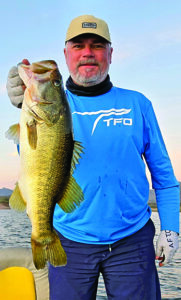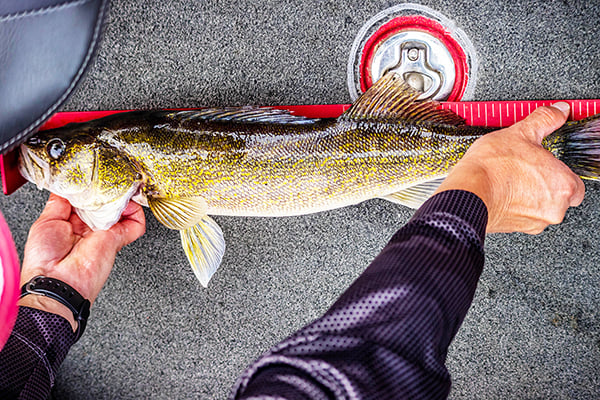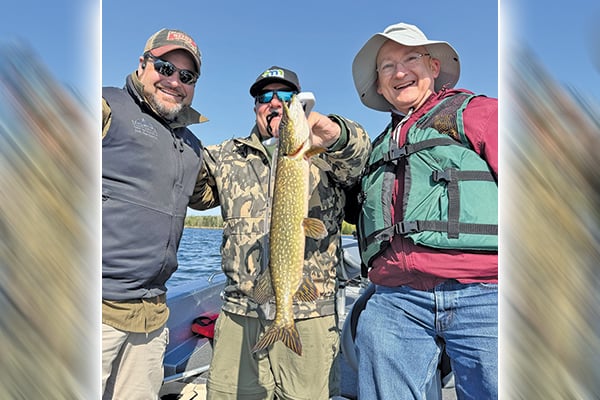Here’s how to work the often overlooked but highly effective free rig – Outdoor News
Outdoor News may earn revenue from products shown on this page by participating in affiliate programs. Click here to learn more.
As we prepare to kick off our 2025 bass fishing season in New York, thoughts go to tackle, baits, and locations we’ll likely target for our first bass fishing adventure.
I’m certain most dedicated bass anglers are familiar with top-waters, crankbaits, spinnerbaits, jerkbaits, plastic worms and creature baits. There are countless ways and locations to present these lures, but there’s also a presentation with plastics that receives little fanfare that ought to find its way into your bass fishing arsenal.
The free rig is like a Texas-rig, but instead of a bullet or cone shaped weight, this presentation employs a cylinder style weight with a circle line tie. What’s different about this technique is the weight isn’t tied to the main line, but rather the main line is fed through the circle line tie and then tied to the hook.
This method of rigging allows the weight to slide freely up and down the line from your plastic offering. The presentation originated in Japan due to intense fishing pressure of their waters and found its way into U.S. bass fishing scene via tournament anglers.
However, you don’t have to be a tournament angler to enjoy the benefit of this presentation.
MORE BASS COVERAGE FROM OUTDOOR NEWS:
Understand the forage to become a better bass angler
Angler lands ‘unicorn’ largemouth, weighing nearly 9.5 pounds, in northeast Ohio reservoir
Breaking down the many black bass subspecies beyond largemouths and smallmouths
Baits & Hooks
I fished the free rigs in numerous lakes across New York, from the Adirondacks and the Great Lakes to the Finger Lakes.
The free rig can generate bites when other presentations fail to produce. What’s fun about this technique is you can fish multiple baits, achieving stellar results, with minimal effort. Most often I have five different baits I rig for clients that produce day-in and day-out.
The Yamamoto Senko (4- or 5-inch), Yamamoto Sensei worm (6 inch), Yamamoto Twin Tail Hula Grub (5 inch), Big Bite Baits YoMama (4 inch) and the Big Bite Baits Slim Minnow (4 inch). I want to keep color selections to a minimum focusing on shades of green pumpkin, purples or black & blue for the worms and grubs.
For the slim minnows I use perch or shad colors. A size 2/0 Extra Wide Gap (EWG) hook fits the worm and creature baits very well, and for the slim minnow I’ll use a size 3/0 straight shank hook.
[embedded content]
Weights
There are several styles of cylinder weights designed for drop-shot fishing that work well. After a bit of trial and error, I’ve settled on weights from DECOY or Bass Tek, tungsten weights, that slide well.
On a sharp deliberate hop, these weights provide good separation from bait, which creates the illusion the bait is now chasing the weight as it falls to the bottom. Oftentimes it’s this visual chase scenario that stimulates the following fish into striking the presentation.
Scenarios
The free rig performs well at any depth, but I usually cast the rig in 10- to 30-feet of water.
Weights vary depending on depth, 1⁄4-ounce in 10- to 15-foot, 3⁄8-ounce in 15- to 20-foot and 1⁄2- to 1-ounce in 20- to 30-foot or deeper. This presentation works in weedy areas and sparsely weeded hard bottom areas of rock and sand.
In the weeds I stay with slender profile baits of worms or the slim minnow because I don’t want the flapping appendages or arms of a creature bait to hang up in the vegetation, negatively impeding the fall.
Conversely when casting the free rig along the outside edge of weed beds, in sparse weeds or hard bottom areas, I prefer the twin tail hula grub or creature baits. The appendages on these two baits move well, displacing more water on the fall, calling the fish to them from greater distances.
Presentation

The free rig is designed to cast out, let it fall to the bottom, reel in the slack line, then employ a sharp deliberate snap of the rod tip to make the weight jump off the bottom, throw some slack in your line, to allow the weight to lead your bait down to the bottom.
You want to achieve separation between your bait and weight, each time the weight falls back to the bottom.
The best way to determine how much separation you’re generating on each snap of the rod tip is to perform the task in shallow clear water. As you visually watch the bait and weight separate on the fall, you might be surprised how little rod movement is required to achieve the desired effect.
You’ll need to experiment to find the best hopping distance, sometimes it’s a short rod snap of 12- to 18-inches to generate a strike and other days it could require a rod snap (lift) of 20-inches or more. In my experience, most strikes occur, as the bait reaches the bottom, but sometimes the strike occurs when the weight and bait initially separate.
The key to making the free rig work as designed is achieving the separation of the weight and bait as the entire thing falls to the bottom on a slack line. Once you’ve mastered the proper rod snap, combined with throwing slack line back toward the water to support the drag free fall of the entire rig, you’re well on your way to catching many fish others leave behind.
Fast action spinning or casting rods in medium-to-medium heavy power, ranging from 6-foot, 10-inches to 7-foot, six-inches, paired with a 6.3:1 to 8.1:1 reel, spooled with 10- to 20-pound line will get the job done. I’ve had very good success with Cortland Masterbraid with a 24- to 36-inch leader section of Cortland Fluorocarbon.
As stated, this presentation was designed to target large and smallmouth bass, but I’ve had days when using the free rig helped me put many walleyes in the net that I likely wouldn’t have caught otherwise.
Capt. Burnie Haney contributes to the New York Outdoor News Fishing Reports.






